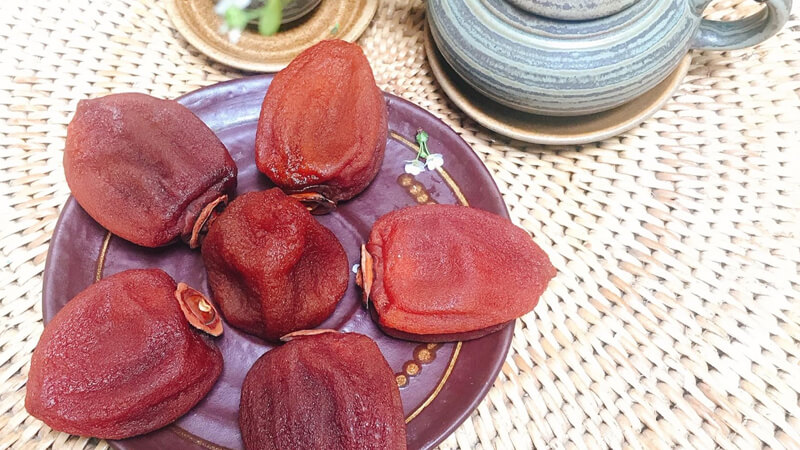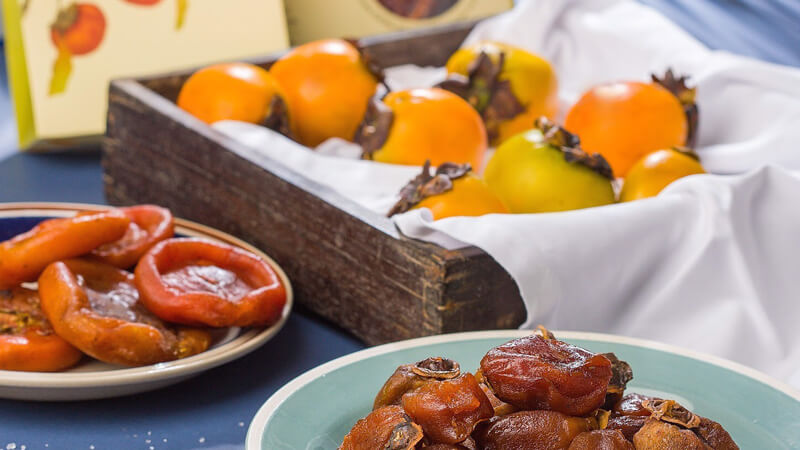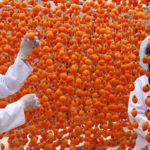Consumers are becoming increasingly wary of low-quality products from China disguised as specialties in Vietnam. Wind-dried Dalat apricots are no exception. Cheaply-made wind-dried apricots from China are now flooding the market, putting consumers at risk.
The following tips on distinguishing between Dalat and Chinese wind-dried apricots will help you avoid potential health hazards.
1 Benefits of Wind-Dried Apricots
Japanese and Korean wind-dried apricots have been all the rage for their exotic appeal, delicious taste, and high price. However, Dalat wind-dried apricots offer a similar taste experience at a more affordable price and are more readily available.
 Dalat Wind-Dried Apricots
Dalat Wind-Dried Apricots
Dalat wind-dried apricots are naturally sun-dried, resulting in a softer texture that retains moisture and delivers a more authentic apricot flavor compared to those dried using other methods. Consequently, they also offer higher nutritional value.
These apricots are a 100% natural product, beneficial for cardiovascular health as they are a good source of natural potassium. Eating 3-4 apricots daily is said to help regulate blood pressure. They are also a low-calorie treat, making them suitable for overweight individuals and those on diets.
 The Many Benefits of Dalat Wind-Dried Apricots
The Many Benefits of Dalat Wind-Dried Apricots
Apricots are rich in potassium and tannin, as well as essential nutrients like beta-carotene, vitamin C, and cryptoxanthin, which are great for eye health, anti-aging, and treating anemia. They are also beneficial for digestive issues and stomach ailments.
You can easily make your own wind-dried apricots at home with simple recipes. Alternatively, you can purchase them from specialty stores, confectionery shops, or major supermarkets to ensure quality.
2 Tips to Distinguish Dalat Wind-Dried Apricots from Chinese Ones
Due to their popularity and perceived health benefits, Dalat wind-dried apricots have become a target for counterfeiting by unscrupulous traders. Genuine Dalat wind-dried apricots are priced between 260,000 and 450,000 VND per kilogram, while Chinese apricots are significantly cheaper, ranging from 90,000 to 170,000 VND per kilogram, reflecting their inferior quality.
Here are some tips to help you differentiate between the two:
Appearance
Dalat wind-dried apricots have an orange-red hue and are typically smaller and longer in shape, with some size variation. Notably, they have little to no white powder on the surface.
 Dalat Wind-Dried Apricots: Smaller and Without White Powder
Dalat Wind-Dried Apricots: Smaller and Without White Powder
In contrast, Chinese wind-dried apricots have a darker shade and are coated with a thick layer of white powder. They are larger and flattened into a disc shape, with thicker skins.
 Chinese Wind-Dried Apricots: Darker with Thick White Powder
Chinese Wind-Dried Apricots: Darker with Thick White Powder
Taste and Texture
- Dalat wind-dried apricots have a softer texture due to the natural drying process. They have a distinctive aroma and a natural, subtle sweetness.
- Chinese wind-dried apricots, on the other hand, feel chewy and elastic when bitten into. They have an overly sweet taste reminiscent of artificial sweeteners.
 Dalat Wind-Dried Apricots: Naturally Sweet
Dalat Wind-Dried Apricots: Naturally Sweet
Shelf Life
 Genuine Wind-Dried Apricots Have a Shorter Shelf Life
Genuine Wind-Dried Apricots Have a Shorter Shelf Life
As Dalat wind-dried apricots do not contain preservatives, they can only be stored for about a month in the refrigerator. They are often sold in vacuum-sealed bags to prolong their freshness.
Chinese wind-dried apricots, on the other hand, are treated with chemicals and can be stored for up to a year, both in and out of the refrigerator. If you accidentally leave them in the fridge for 2-3 months and they still appear fresh, they are likely the Chinese variety.
Note: Chinese wind-dried apricots may be sold at extremely low prices in local markets, but when sold in Dalat, their prices may be inflated to match those of genuine Dalat wind-dried apricots, deceiving unsuspecting tourists.
By being aware of these key differences, you can ensure that you are purchasing authentic Dalat wind-dried apricots and supporting local specialties. Be a wise and vigilant consumer to protect your health and avoid low-quality, harmful food products.


































